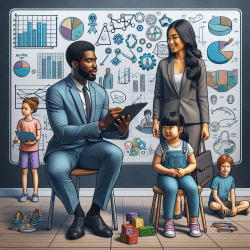Breaking Down Barriers: Embracing Reverse Innovation in Child Therapy
As a speech-language pathologist committed to data-driven decision-making, I am constantly seeking innovative solutions to enhance therapeutic outcomes for children. A recent study titled ‘They hear “Africa” and they think that there can’t be any good services’ – perceived context in cross-national learning: a qualitative study of the barriers to Reverse Innovation, sheds light on the untapped potential of innovations from low-income countries (LICs) in improving healthcare practices in high-income countries (HICs).
Understanding Reverse Innovation
Reverse Innovation refers to the process where innovations developed in LICs are adapted and adopted in HICs. This concept challenges traditional innovation diffusion, which typically flows from HICs to LICs. The study by Harris et al. (2015) highlights how preconceived notions about the source of innovation can hinder the adoption of effective solutions from LICs.
Key Findings: Overcoming Stereotypes
The research reveals that innovations from LICs are often prematurely dismissed due to stereotypes and biases. For example, healthcare professionals may be skeptical about the applicability of an innovation from India, despite its proven success, simply because it originates from a low-income context. This bias limits opportunities to learn from successful models that could be beneficial if adapted to the US context.
Implications for Child Therapy
In the realm of child therapy, embracing Reverse Innovation can lead to significant advancements. Here are some ways practitioners can leverage these insights:
- Broaden Perspectives: Encourage an open-minded approach to evaluating innovations, focusing on evidence and outcomes rather than the source country.
- Collaborative Learning: Engage in cross-national collaborations to understand how successful models from LICs can be adapted to local contexts.
- Counter-Stereotyping: Utilize techniques from cognitive psychology and marketing to challenge stereotypes and promote objective evaluation of innovations.
Encouraging Further Research
Practitioners are encouraged to delve deeper into the study of Reverse Innovation and its potential applications in child therapy. By doing so, they can uncover innovative solutions that address unique challenges faced in their practice. Exploring diverse perspectives and learning from global experiences can enhance therapeutic strategies and ultimately improve outcomes for children.
Conclusion
Reverse Innovation presents a promising avenue for advancing child therapy practices. By overcoming stereotypes and embracing innovations from diverse contexts, practitioners can unlock new possibilities for improving therapeutic outcomes. To read the original research paper, please follow this link: They hear “Africa” and they think that there can’t be any good services’ – perceived context in cross-national learning: a qualitative study of the barriers to Reverse Innovation.










